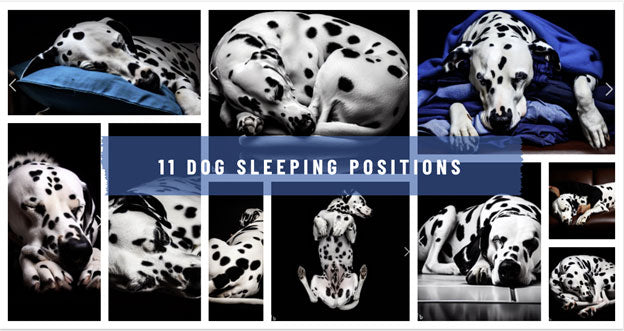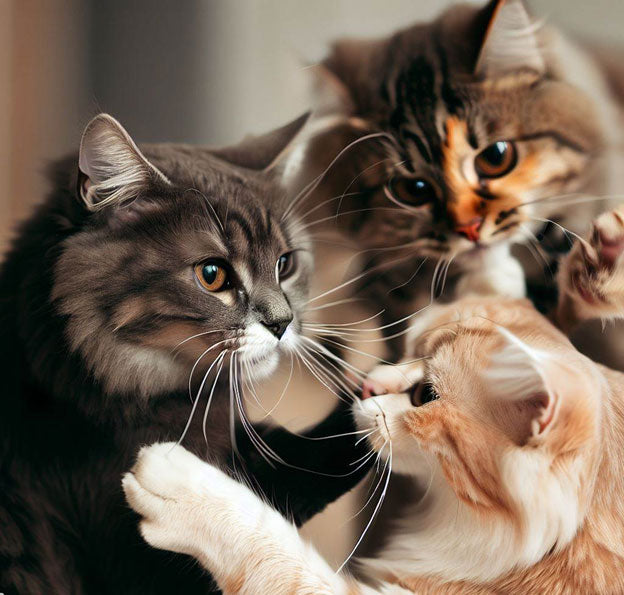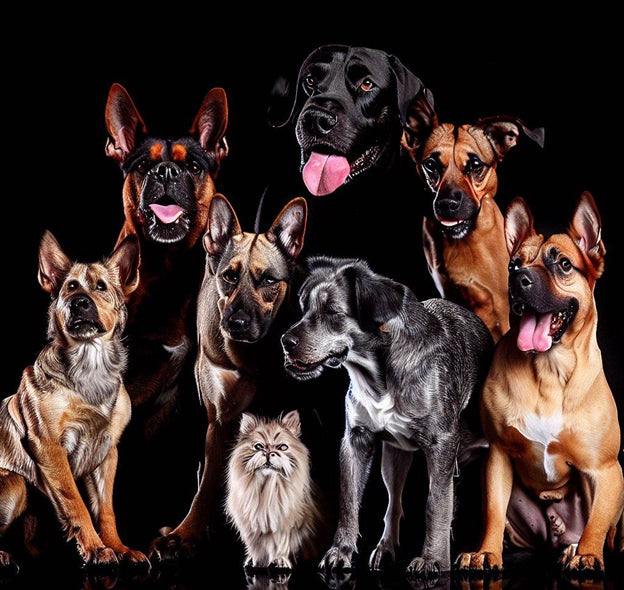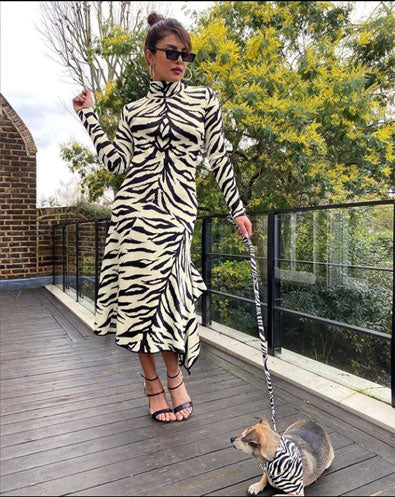
Paws of Duty: Dogs in the Army
Disclaimer: Some of the links in our blog posts are affiliate links. This means we may earn a small commission if you make a purchase through them which helps support our blog, at no extra cost to you.
Military dogs have proven to be loyal and valuable assets. They play a crucial role in various tasks, from sniffing out explosives to providing emotional support to soldiers. Several dog breeds have shown exceptional aptitude as military dog breeds, including the Labrador Retriever, German Shepherd, and Belgian Malinois.
Labrador Retrievers are often favored as dogs in the army due to their intelligence, versatility, and friendly nature. These army dogs excel in search and rescue operations, bomb detection, and tracking missions. Their high trainability and strong work ethic make them valuable companions on the battlefield.
German Shepherds have a long-standing history as military dogs. They are highly intelligent and agile and possess excellent scent-detection abilities. German Shepherds are commonly deployed as patrol, guard, search, and rescue dogs. Their loyalty, courage, and protective instincts make them ideal military canines.
Belgian Malinois, known for their exceptional drive and energy, are widely utilized in the military. They are adept at detecting explosives, apprehending suspects, and performing surveillance. Their intelligence, agility, and unwavering dedication make them a top choice for military units worldwide.
Other breeds that have proven their worth in military service include the Dutch Shepherd, Boxer, and Doberman Pinscher. Each breed brings unique traits and skills that contribute to the success of military operations.
The training process for military dogs is rigorous and comprehensive. These dogs undergo specialized training to develop their physical stamina, obedience, and specific skills for their designated roles. They form strong bonds with their human handlers and work together as a cohesive team.

Army Dog Skills
Army dogs play a vital role in military operations, utilizing their unique skills and training to support and protect soldiers. These highly trained canines are valued assets in various capacities, performing tasks crucial for the success and safety of military missions. Some major tasks are as follows.
- Detection of explosives and other threats: Army dogs are trained to detect explosives, narcotics, and other hazardous materials. Their unique sense of smell allows them to locate hidden threats, protecting soldiers and civilians.
- Search and rescue operations: Army dogs are skilled in locating missing persons, whether finding trapped individuals in disaster-stricken areas or tracking down soldiers in combat zones. Their tracking abilities and agility are essential for successful search and rescue missions.
- Patrol and security: Dogs serve as sentries, patrolling areas to identify potential threats and alerting their human counterparts to suspicious activity. Their presence alone is a deterrent, providing an added layer of security.
- Support for specialized units: Army dogs are trained to assist specialized units such as Special Forces or Navy SEALs. They may perform tasks such as scouting, infiltrating enemy territories, or protecting the team during missions.
- Canine-assisted medical support: Some army dogs are trained to provide medical support, including aiding in detecting medical conditions or injuries in soldiers. Their keen senses can identify changes in scent or behavior that may indicate health issues.

Why Do Army Dogs Crawl?
Crawling is a specialized technique army dogs use in specific military scenarios. These highly trained canines demonstrate their adaptability and skill by executing crawling maneuvers, which serve specific purposes during missions.
- Camouflage and concealment: Crawling allows army dogs to blend into their surroundings and remain inconspicuous. By minimizing their visibility, they can effectively hide from the enemy and avoid detection.
- Accessing confined spaces: In certain military operations, army dogs may need to navigate tight or restricted freedoms where normal walking or running would be impractical. Crawling enables them to maneuver through such areas, including tunnels, narrow passages, or dense vegetation.
- Stealth and silence: Crawling enables army dogs to move silently, minimizing the noise produced by their movements. This stealthy approach is crucial in covert operations, where secrecy and surprise are paramount.
- Low-profile target: Army dogs present a smaller and less exposed target to potential threats by crawling. This reduces the likelihood of being spotted and targeted by enemy forces, enhancing their safety and survivability.
- Enhanced stability and balance: Crawling provides army dogs with improved strength and balance, especially on uneven or unstable terrain. This helps them maintain control and agility while moving in challenging environments.
Ever wondered, what do the dogs sleeping position mean?
Read to know the meaning behind a dog’s sleeping position.
What Happens to Army Dogs After Retirement?
After years of dedicated service, army dogs deserve a well-earned retirement. These brave and loyal canines, who have played vital roles in military operations, are provided care and consideration once their active duty ends. The welfare and future of retired army dogs are important concerns for the military.
Adoption by handlers: In many cases, retired army dogs are adopted by their former handlers. The strong bond developed during their years of service often leads to a seamless transition into civilian life with their trusted human companion.
Rehoming to loving families: If handlers cannot adopt their retired army dogs, efforts are made to find suitable and loving homes for these canines. Organizations and agencies responsible for military working dogs prioritize finding caring families who understand the unique needs of retired military dogs.
Canine retirement programs: Specialized programs and facilities are in place to cater to the specific needs of retired army dogs. These programs provide a comfortable and nurturing environment, ensuring the dogs receive appropriate care, medical attention, and support during their retirement years.
Law enforcement and public service roles: Some retired army dogs continue serving in law enforcement agencies or public service roles. Their training and skills make them valuable in search and rescue operations, detection work, and community outreach programs.
Recognition and honors: Retired army dogs are often recognized for their years of service. Ceremonies, awards, or dedicated memorials highlight their contributions and express gratitude for their reliable service to the military.
Famous US Army Dogs
Sergeant Stubby: A World War I hero, Sergeant Stubby was a mixed-breed dog who served as a mascot and sentry for the 102nd Infantry Regiment. He participated in combat, alerted soldiers to gas attacks, and even captured a German soldier.

Air Force Dog- Nemo
A German Shepherd, Nemo served in the Vietnam War alongside Airman Robert Thornburg. During an attack on their airbase, Nemo sustained injuries while defending Thornburg, who was also wounded. Nemo's bravery earned him the distinction of being the first military working dog to receive the Purple Heart.
Did You Know These Facts About Military Dogs?
- Majority of military working dogs are born overseas.
- All new puppies go through a 5-month military dog foster program.
- Sniffer dogs for detection purposes are commonly sporting dog breeds.
- German Shepherds, Dutch Shepherds, and Belgian Malinois are top choices for tactical MWDs.
- The cost of training a military dog can range from $20,000 to $40,000, while preparing a dog for explosives detection may exceed $150,000.
- Approximately 50% of dogs in the MWD program successfully complete training.
- Military working dogs hold a rank higher than their handlers.
- Dogs have been parachuting since the 1940s, adding another adventurous chapter to their incredible history.
If you're looking for gifts to delight the pet lover who is in the army, look no further than our collection of dogs in military uniform! These treasures will surely bring a big grin to their face. Whether it's a custom pet portrait, a personalized pet mug, or a tail-waggingly adorable pet-themed accessory, we've got just the gift to make their heart skip a beat.
Popular Blog
7 Unique Products That Every Dog Owner Will Love
Let’s be honest, our dogs run the house. They make us laugh, steal our socks,...
50 Funny Dog Birthday Puns for a Tail-Wagging Good Time!
Here is a delightful collection of 50 dog birthday puns guaranteed to bring s...
Homemade Dog Toys Your Pooch Will Love: Top 10 DIY Delights
Pet toys, especially safe dog toys, can be expensive and don’t last too long....
Canine Companions Worldwide: Modern Treatment & Taxes for Dog Owners
The intricate relationship between humans and dogs is a testament to a profou...











